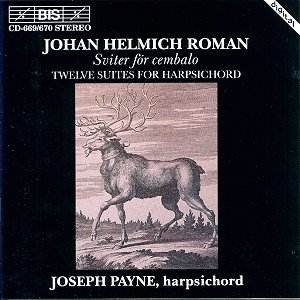 Composer: Rudolf Tobias (1873-1918)
Composer: Rudolf Tobias (1873-1918)
Work: Des Jona Sendung (Jonah’s Mission) – an oratorio in a Prologue and Five Scenes (1909)
Restored and arranged by Vardo Rumessen
Performers: Pille Lill (soprano), Urve Tauts (mezzo-soprano), Peter Svensson (tenor), Raimo Laukka (baritone), Mati Palm (bass), Estonian Philharmonic Chamber Choir, Tallinn Boys’ Choir, Ines Maidre (organ), Estonian State Symphony Orchestra, conducted by Neeme Järvi
Recording: 23-29 June 1995, Estonia Concert Hall, Tallinn
Label: BIS-CD-731-732
Release Date: October 2001
Duration: 114:13
Rudolf Tobias’s Des Jona Sendung emerges from the shadows of musical history, illuminated by a vibrant recording that captures the oratorio’s dramatic and spiritual fervor. As a composer whose life spanned the turbulent years leading to World War I, Tobias was a witness to the cultural and political upheaval in Estonia and Europe at large. This oratorio, completed in Leipzig in 1908, stands as both a reflection of his nationalistic aspirations and a testament to his compositional prowess.
The performance, under the baton of Neeme Järvi, is a masterclass in interpretative depth. The Estonian State Symphony Orchestra, buoyed by the robust Estonian Philharmonic Chamber Choir, breathes life into Tobias’s intricate choral textures and orchestral colorations. In particular, the choir’s delivery is compelling; their unified sound resonates with the kind of fervor that echoes Vaughan Williams’s Sea Symphony, yet retains its distinctively Estonian character. The “Believers’ Congregation” in Scene 1, for instance, elicits a palpable sense of urgency, underscoring the existential themes of duty and redemption that Tobias weaves throughout the work.
Vardo Rumessen’s restoration of Des Jona Sendung is remarkable not only for its fidelity to the original score but also for its orchestration choices that reveal Tobias’s unique musical language. The orchestration is particularly notable for its imaginative use of woodwinds, which frequently emerge from the orchestral fabric with clarion clarity. The oboe’s plaintive cry in the Heilig of Scene 3, for example, punctuates the thick textures with a moment of poignant introspection, drawing the listener into the emotional core of the piece.
Tobias’s use of thematic development is both sophisticated and compelling. The 38 sections of the work unfold with a dramatic narrative arc, mirroring the biblical tale of Jonah while embedding layers of cultural significance pertinent to early 20th-century Estonia. The children’s chorus that provides “unsullied hope” serves not merely as a narrative device but as a representation of the Estonian spirit—resilient and yearning for renewal amidst adversity. This thematic duality is particularly powerful in the closing Amen, where the interplay of soloists and choir encapsulates a vision of divine mercy and communal redemption.
The recording quality deserves particular commendation. The Estonia Concert Hall’s acoustics envelop the listener in a vibrant soundscape, allowing the orchestral and choral forces to unfurl with both clarity and warmth. The engineering captures the dynamic range of Tobias’s score, from the thunderous climaxes to the delicate whispers of introspection, with a precision that enhances the overall impact of the performance.
In contextualizing Des Jona Sendung within the broader canon of choral-orchestral works, one cannot overlook its parallels with Sibelius’s Kullervo and the fervent nationalism found in the compositions of contemporaries like Uuno Klami. Tobias’s voice, however, is distinctly his own, marked by a rich harmonic palette and a compelling use of rhythmic drive that sets him apart. The work’s historical significance cannot be overstated; it is a bold assertion of Estonian identity during a time of cultural renaissance, and its themes of moral struggle resonate with contemporary audiences as much as they did in Tobias’s time.
In conclusion, the world premiere recording of Des Jona Sendung is not merely an archival endeavor; it is a revitalization of a significant work that deserves a prominent place in the choral-orchestral repertoire. This performance, steeped in passion and executed with formidable skill, invites listeners to engage with a composer whose voice speaks with urgency and depth. Tobias’s oratorio is a remarkable testament to his vision, and this recording is a persuasive argument for its rightful recognition. As we listen, we are reminded that music, at its core, possesses the power to transcend time and articulate the enduring human spirit.



